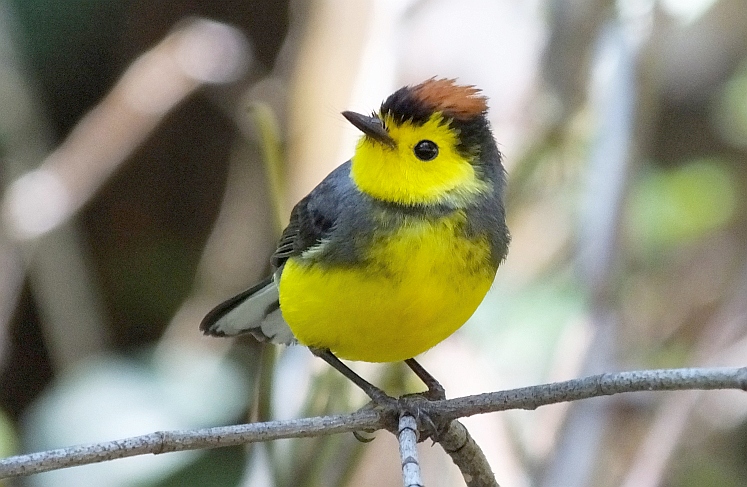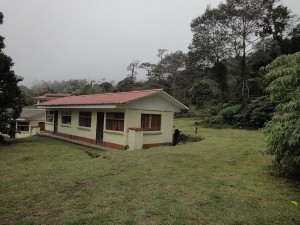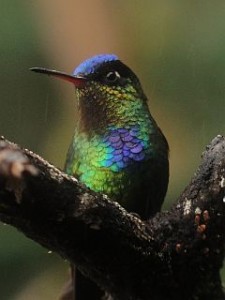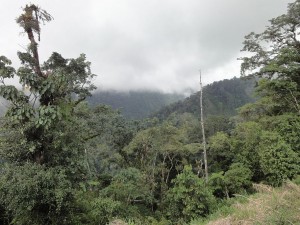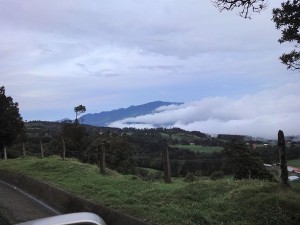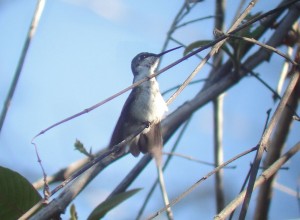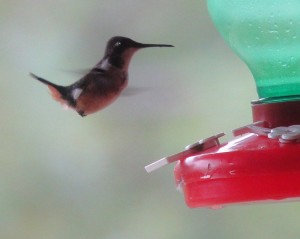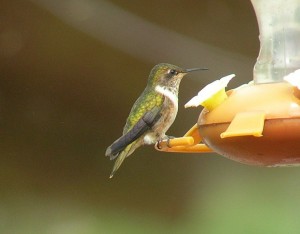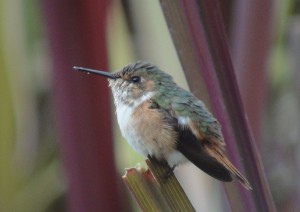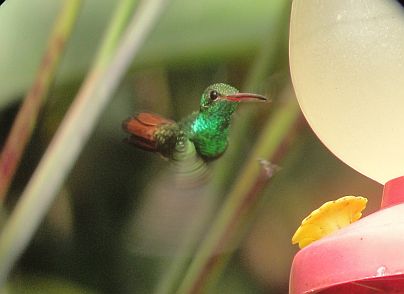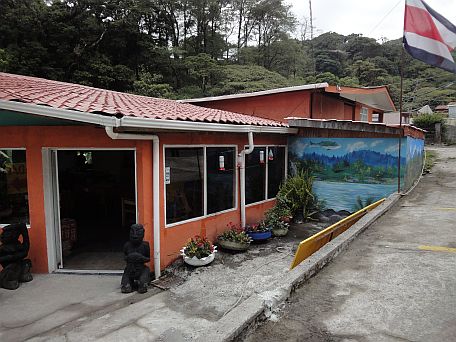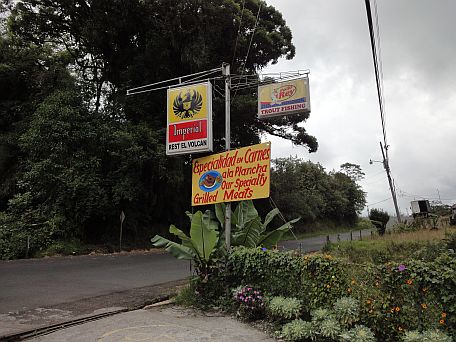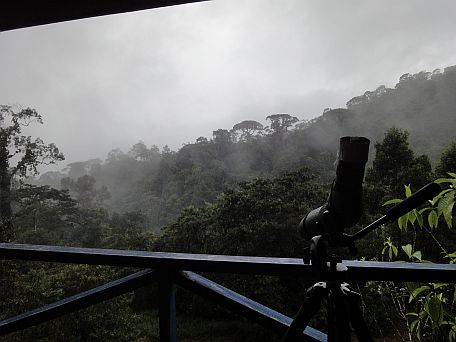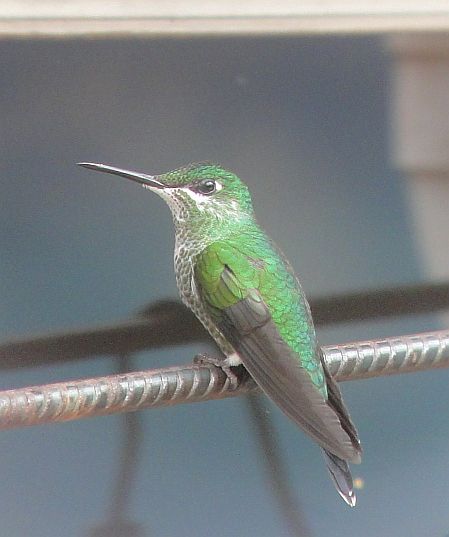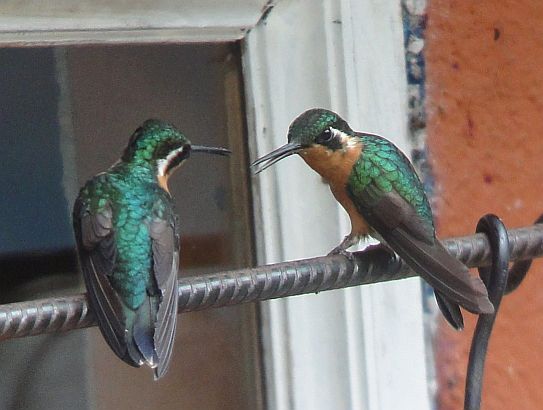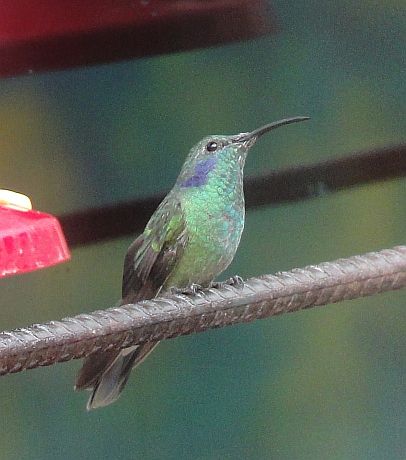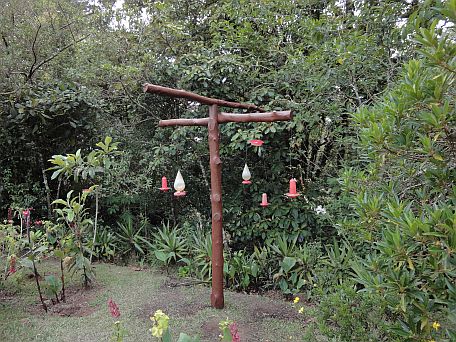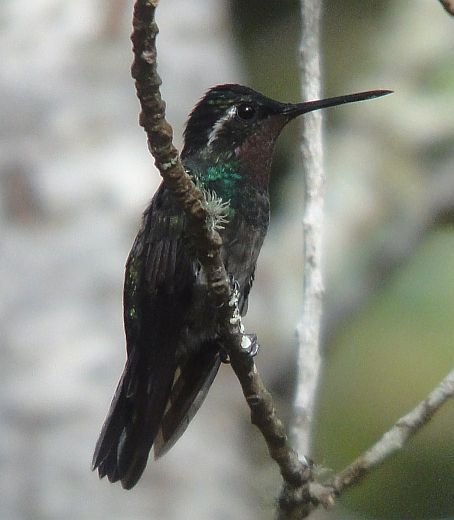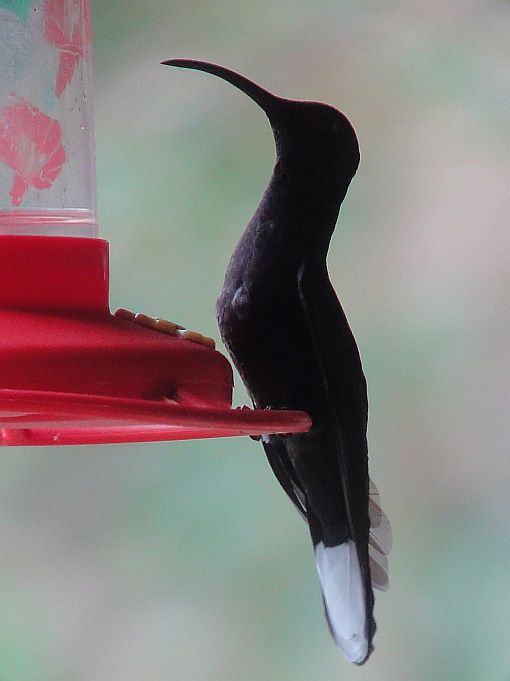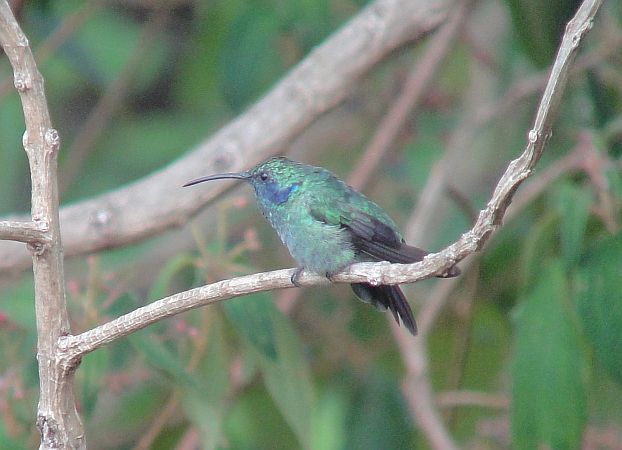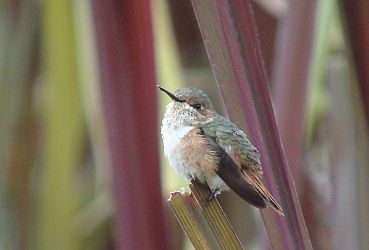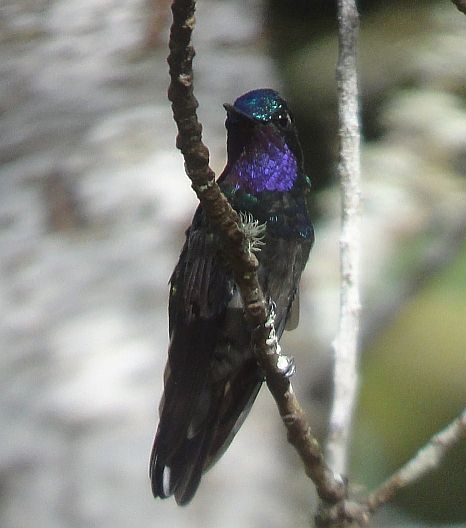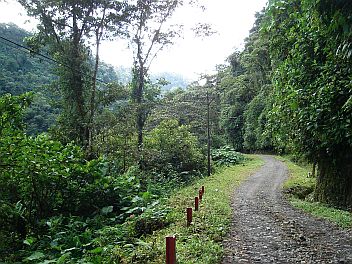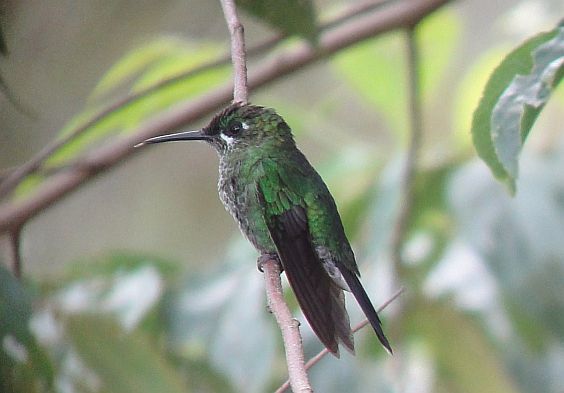Poas is the name of the volcano that I can see off to the northwest of my home. It’s an obvious stand-alone mountain that is usually topped by clouds. On sunny days, though, close scrutiny of its upper reaches reveals a distinct, flat appearance. That flat part is the edge of the crater and marks the place where most people go when they visit the volcano. As for myself, I rarely go up that high but instead focus on the road up to around the gate of the national park because high elevation birds are more exciting to watch than the crater (since I am a birder and not a crater watcher or vulcanologist- a much more dangerous pastime). Since I can get up to Poas and vicinity quicker than other areas with good habitat, I bird and guide around there with some regularity. I also do an annual breeding bird count and this is nice because it forces me to head up there by 5 in the morning.
Although the afternoon birding on Poas tends to be great, that early hour does give a good idea of what’s flying around those high elevation habitats. In this case, that would be pastures with scattered, epiphyte drenched oaks, temperate zone forest, moist subtropical forest fragments mixed with non-native Guatemalan Cypress, and nice remnant cloud forest in riparian zones that are connected to larger blocks of forest. I start the count at the Volcan Restaurant, end it up near the main gates to the park and hear lots of birds in between. I also see some here and there but as with the majority of bird counts, almost everything is found by sound.
One of the most common birds is the Mountain Elaenia. I think I got more of these birds than any other species at every point.

As you can see, this is a typically nondescript flycatcher. It will remind you of an Empid but looks even less distinctive than the resident Black-capped Flycatcher. I suppose White-throated Flycatcher could also show up around Poas but I haven’t seen it there yet.
The first few stops yielded several yodeling Prong-billed Barbets and hummingbirds were coming and going from the feeders at the Volcan Restaurant. While guiding there yesterday, just after saying that I had never seen a Scintillant Hummingbird at the restaurant but that they could occur, up pops a rufous-flanked, excellent candidate. After closely inspecting the bird, I called it as a young male Scintillant on account of the mostly rufous tail with narrow subterminal band, rufous flanks sans green, lack of a thin rufous line that goes from the eye to the bill, and a couple of coppery orange feathers on the gorget (which is why I called it a young male although who knows, maybe it’s a female).

One hummingbird species missed during the count but seen while guiding was a Stripe-tailed. Since this is the least common of the 7 regularly occurring species at their feeders, I was quite pleased to see it.

Other uncommon species that were recorded during the count were:
- Costa Rican Pygmy-Owl- Pretty rare in the area but occurs.
- Resplendent Quetzal- Had one female. They are around but tough to find unless you can locate some fruiting, wild avocados.
- Buff-fronted Quail-Dove- There were a few calling from the more intact forest on the higher part of the road.
- Elegant Euphonia- Nice surprise as it seems to be pretty rare around there.
- Yellow-bellied Siskin- As mundane as a goldfinch might seem to be, this was the rarest bird species from the count. Trapping this bird for cages has eliminated it from many parts of the mountains above the Central Valley.
Species found at nearly every stop included Long-tailed Silky Flycatcher (Poas is a great area for this sleek bird), Golden-browed Chlorophonia, Common Bush Tanager, Band-tailed Pigeon (because they seem to always be flying overhead), and Slate-throated Redstart. Ruddy-capped Nightingale-Thrush is also very common in the Poas area. I saw lots as they came out to feed on the road at dawn.


Mountain Thrushes were also coming out onto the road and flying all over the place. No pics of them because they suffer from FNS (flighty nervous syndrome). Sooty Robins don’t though, and once I got up into the temperate zone, they were taking center stage all along the road.



After losing the staring contest with this Blackbirdish (the Palearctic one) looking thrush, I saw a bunch of other high elevation birds. Bright orange mistletoe was being visited by Green Violetears, Fiery-throated Hummingbirds, and Purple-throated Mountain-Gems.



No bamboo birds this year and not as many quetzals are around but the birding is still always nice and easy around Poas.
